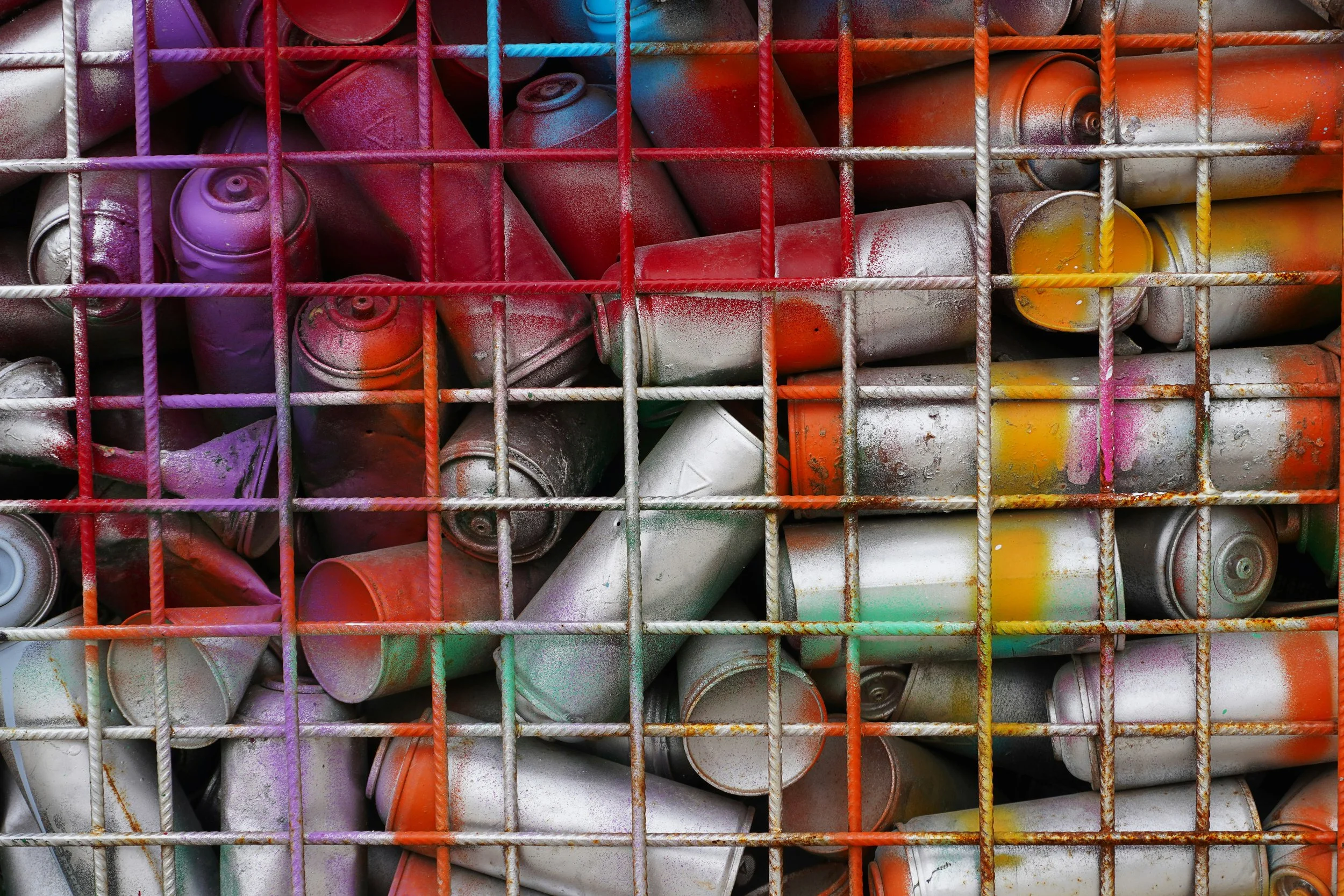Waste as Aesthetic: Branding in the Age of Imperfection
Introduction
Branding has traditionally celebrated polish, symmetry and flawlessness. Glossy packaging, pristine shop fronts and smooth advertising campaigns were designed to signal control, professionalism and quality. Waste, by contrast, was something to conceal. Brands invested heavily in hiding rough edges, discarding imperfect materials and designing packaging that looked untouched.
In recent years, this attitude has shifted. A growing number of brands are making waste visible, and not only visible but desirable. Recycled packaging, patchwork clothing, distressed typography and reclaimed store interiors are now treated as signs of authenticity and responsibility. Waste has become an aesthetic language of its own, signalling transparency, sustainability and cultural alignment.
This article explores the idea of waste as aesthetic, why it resonates with consumers, how brands are applying it, and what risks and opportunities it presents for the future of branding.
The Cultural Shift Towards Imperfection
For most of the twentieth century, brands equated perfection with trust. To show flaws was to suggest weakness. The supermarket aisle, for example, was lined with shiny plastic packages and symmetrical branding. Food looked engineered to be identical.
However, several cultural changes have redefined what consumers value.
Environmental Awareness
The climate crisis and the rise of sustainability discourse have changed how people perceive waste. Rather than being something to hide, waste is now evidence of a brand’s environmental choices.Aesthetic Fatigue
In an era of digital perfection, people are surrounded by flawless filters, polished advertising and computer-generated graphics. This ubiquity of perfection can feel sterile. Imperfection, by contrast, attracts attention and feels more human.Subcultural Influence
Punk, grunge, streetwear and DIY cultures embraced imperfection long before mainstream brands did. Visible stitching, torn fabric and collage graphics signalled authenticity and rebellion. These aesthetics have filtered into the mainstream.Transparency Demands
Consumers increasingly demand to know how things are made. Waste materials, when left visible, make production processes transparent and highlight re-use as a deliberate choice.
What Waste as Aesthetic Means
Waste as aesthetic does not simply mean using recycled materials. It means making the traces of waste part of the design language itself. Instead of bleaching paper to look uniform, a brand might use unbleached card with visible fibres. Instead of hiding irregularities in upcycled fashion, the irregularities become design features.
The aesthetic relies on celebrating roughness, irregularity and patchwork rather than concealing them. Waste becomes both material and metaphor: material because products literally incorporate discards, and metaphor because it symbolises honesty, resilience and refusal to conform to outdated ideals of polish.
Practical Applications
Packaging
One of the most common expressions is recycled packaging. Coffee cups made from reused fibres, shipping boxes printed with minimal ink on brown card and wrappers that highlight their compostable nature are all examples. Some brands lean further, incorporating graphics that look deliberately imperfect, with overprinted type or torn edges.
Fashion
Clothing brands increasingly embrace patchwork, visible repair stitching and fabric made from offcuts. Trainers might incorporate mismatched colours, while designers experiment with “deconstructed” looks. Waste aesthetics align closely with the rising popularity of upcycling and circular fashion.
Retail Design
Shops often feature furniture made from reclaimed wood, shelving built from pallets and exposed industrial finishes. Instead of disguising scratches or dents, they highlight them as part of the story.
Visual Identity
Graphic design can simulate the textures of photocopies, collage and torn posters. Logos may appear distressed, and digital campaigns often mimic the look of zines or reused print materials.
Case Signals
Patagonia promotes visible repair through its Worn Wear programme, encouraging customers to wear patched clothing proudly.
IKEA’s Scraps collection used offcuts to create limited-edition furniture, making waste central to design rather than hidden in supply chains.
Adidas x Parley produced shoes made from ocean plastics, with storytelling that foregrounds the material’s reclaimed origin.
Maison Margiela has long incorporated deconstruction into luxury fashion, elevating waste aesthetics into a high-fashion context.
These examples illustrate how both mainstream and luxury brands are reframing waste as creativity.
The Symbolism of Waste
Waste carries symbolic power when used deliberately.
Honesty
Consumers often perceive visible imperfections as a sign of transparency. A recycled package looks less artificial, creating trust.Rebellion
By elevating waste, brands reject the traditional codes of polish and luxury. This defiance appeals to consumers seeking differentiation.Sustainability
Waste aesthetics provide visible proof of environmental commitment. Instead of promising sustainability in abstract terms, the material itself tells the story.Creativity
Turning waste into design requires ingenuity. The outcome signals innovation and originality.
Consumer Psychology
Why do consumers find waste aesthetics appealing?
Contrast with Perfection: In a world of perfect digital experiences, roughness stands out. The irregular attracts the eye.
Evidence of Care: Waste materials suggest that a brand is thoughtful, committed to re-use rather than careless disposal.
Cultural Identity: For many consumers, especially younger audiences, aligning with brands that embrace imperfection is a way of signalling belonging to values of honesty, sustainability and creativity.
Nostalgia: Zine culture, DIY fashion and analogue photography all celebrated imperfection. Waste aesthetics resonate with these cultural memories.
Benefits for Brands
Differentiation: In markets filled with smooth and glossy designs, roughness can be distinctive.
Cultural Relevance: Waste aesthetics align with sustainability, anti-perfection movements and youth culture.
Emotional Connection: Imperfections often evoke warmth, humour and relatability.
Storytelling: Each reused or irregular element tells a story, making brand narratives richer.
Risks and Pitfalls
However, adopting waste aesthetics also carries risks.
Perceived Low Quality
Some audiences may associate roughness with cheapness or lack of professionalism.Greenwashing
Using waste aesthetics as a style without real sustainable practices risks accusations of dishonesty.Cultural Mismatch
While younger urban audiences may embrace the look, other groups may interpret it as careless.Operational Issues
Using irregular or upcycled materials at scale can be complex and costly.
Waste and Luxury
Perhaps the most provocative development is the rise of waste aesthetics in luxury contexts. Traditional luxury was defined by perfection and flawlessness. Yet luxury brands are now incorporating distressed, irregular and recycled materials into collections.
Why? Because uniqueness is increasingly valued over polish. A bag made from offcuts may be one of a kind, making it more desirable than a perfectly identical product. Waste aesthetics thus become not a mark of lack but a mark of exclusivity.
Future Directions
Mainstream Normalisation
As sustainability becomes unavoidable, waste aesthetics may move from niche to standard, appearing in everyday products.Algorithmic Waste Design
Artificial intelligence may generate unique patterns from waste materials, ensuring each product looks distinctive.Circular Aesthetics
Products will be designed to wear in, repair visibly and age beautifully, with waste aesthetics built into the lifecycle.Hybrid Materials
Innovations in bio-based materials will incorporate organic waste, creating new textures and appearances.
Ethical Considerations
Waste aesthetics must be paired with genuine sustainable practice. Consumers are increasingly adept at detecting superficial gestures. If waste-inspired visuals are not supported by actual waste reduction or recycling processes, the result is greenwashing.
There is also a risk of trivialising environmental issues. Waste is a serious global problem, not merely a source of design inspiration. Brands must respect this reality and use the aesthetic responsibly.
Conclusion
Waste as aesthetic represents a radical rethinking of branding. What was once hidden is now highlighted, what was once discarded is now celebrated. By transforming imperfections into visual and material assets, brands align with cultural values of honesty, sustainability and rebellion against sterile perfection.
This approach offers differentiation, cultural relevance and powerful storytelling. Yet it also demands authenticity, care and cultural sensitivity. Waste aesthetics cannot be used merely as a style, they must reflect real practices and commitments.
In the end, waste as aesthetic reflects a deeper cultural movement: the recognition that beauty can be found in imperfection and that value can emerge from what was once discarded. In a century defined by environmental challenges and cultural shifts, the brands that thrive may be those that embrace imperfection not as weakness but as strength.

